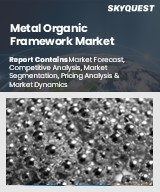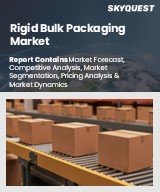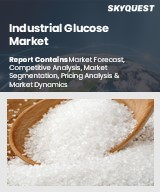
|
시장보고서
상품코드
1599619
배선 덕트 시장 : 유형, 재료, 용도별 - 세계 예측(2025-2030년)Wiring Duct Market by Type (Flexible Wiring Duct, Narrow Finger Wire Duct, Solid Wall Wire Duct), Material (Aluminum, Halogen-Free PPO, Polyphenylene), Application - Global Forecast 2025-2030 |
||||||
배선 덕트 시장의 2023년 시장 규모는 3억 8,617만 달러로 2024년에는 4억 273만 달러에 달할 것으로 예상되며, 연평균 4.38% 성장하여 2030년에는 5억 2,139만 달러에 달할 것으로 예측됩니다.
배선 덕트는 전기 관리의 중요한 구성요소로 산업, 상업 및 주거용 전기 배선을 정리, 배선 및 보호하는 데 사용되는 구조화 된 경로를 말합니다. 그 필요성은 안전하고 효율적인 전기 시스템에 대한 요구에서 비롯되어 단락을 방지하고 유지보수 및 설치를 용이하게 합니다. 배선 덕트는 주로 건설, 자동차, 통신, 산업 제조 등 체계적인 케이블 관리가 중요한 부문에서 주로 사용됩니다.
| 주요 시장 통계 | |
|---|---|
| 기준 연도(2023년) | 3억 8,617만 달러 |
| 예측 연도(2024년) | 4억 273만 달러 |
| 예측 연도(2030년) | 5억 2,139만 달러 |
| CAGR(%) | 4.38% |
시장 인사이트 측면에서 볼 때, 배선 덕트 시장의 성장은 주로 빠른 도시화 속도, 산업 자동화 증가, 에너지 효율적인 시스템에 대한 수요 증가의 영향을 받고 있습니다. 통신 인프라 및 스마트 그리드 용도의 확대도 크게 기여하고 있습니다. 이 부문의 비즈니스 기회는 친환경적이고 지속가능한 덕트 소재 개발, 성능 향상을 위한 스마트 기술과의 통합, 산업 기반이 확대되고 있는 신흥국 시장에서의 확장에 있습니다. 그러나 높은 초기 설치 비용과 오래된 건축물의 기존 시스템과의 호환성 문제 등이 제약요인으로 작용하고 있습니다. 또한, 환경 문제로 인해 사용 자재에 대한 엄격한 규제가 있는 것도 시장 성장의 걸림돌로 작용하고 있습니다.
사업 성장을 위해 재활용 가능한 소재, 생분해성 소재, 첨단 제조 기술, 배선 덕트의 기능성을 향상시키기 위한 IoT 및 AI 도입 등의 분야에서 혁신을 추구할 수 있습니다. 가볍고 내구성이 뛰어나며 유연한 소재에 대한 연구는 경쟁 우위를 가져다 줄 수 있습니다. 시장 경쟁은 완만하고, 기존 진입자와 신규 시장 진출기업가 혼재되어 있으며, 지속적인 개선과 기술 발전에 대한 적응에 중점을 두고 있습니다. 기업들은 특정 산업 수요를 충족시키기 위한 제품 다양화 및 맞춤화, 규제 기준 준수, 새로운 시장 개척을 위한 전략적 파트너십에 초점을 맞추어야 합니다. 이러한 인사이트와 기회를 활용하면 기업은 과제를 극복하고 효율적인 배선 관리 솔루션에 대한 수요 증가를 활용할 수 있습니다.
시장 역학 : 빠르게 진화하는 배선 덕트 시장의 주요 시장 인사이트를 공개
배선 덕트 시장은 수요 및 공급의 역동적인 상호작용에 의해 변화하고 있습니다. 이러한 시장 역학의 변화를 이해함으로써 기업은 정보에 입각한 투자 결정을 내리고, 전략적인 의사결정을 정교화하며, 새로운 비즈니스 기회를 포착할 수 있습니다. 이러한 트렌드를 종합적으로 파악함으로써 기업은 정치적, 지리적, 기술적, 사회적, 경제적 영역 전반에 걸친 다양한 리스크를 줄일 수 있으며, 소비자 행동과 그것이 제조 비용 및 구매 동향에 미치는 영향을 보다 명확하게 이해할 수 있습니다.
- 시장 성장 촉진요인
- 데이터 스테이션 및 정보 기술 장비에 대한 요구 증가
- 파이프라인 재활용 및 해체 관련 환경문제에 대한 우려
- 시장 성장 억제요인
- PVC와 같은 와이어 덕트에 사용되는 재료는 독성이 높은 다이옥신을 생성합니다.
- 시장 기회
- 무할로겐 배선 덕트의 적용 범위 확대
- 부동산 기업 및 인프라 확충에 대한 벤처기업 증가
- 시장 과제
- 덕트 신설에 따른 문제점
Porter's Five Forces : 배선 덕트 시장 탐색을 위한 전략 도구
Porter's Five Forces 프레임워크는 시장 상황의 경쟁 구도를 이해하는 데 중요한 도구입니다. Porter's Five Forces 프레임워크는 기업의 경쟁을 평가하고 전략적 기회를 모색하기 위한 명확한 방법을 설명합니다. 이 프레임워크는 기업이 시장 내 세력도를 평가하고 신규 사업의 수익성을 판단하는 데 도움이 됩니다. 이러한 인사이트를 통해 기업은 강점을 활용하고 약점을 보완하며 잠재적 도전을 피함으로써 보다 강력한 시장 포지셔닝을 확보할 수 있습니다.
PESTLE 분석 : 배선 덕트 시장의 외부 영향 파악
외부 거시 환경 요인은 배선 덕트 시장의 성과 역학을 형성하는 데 매우 중요한 역할을 합니다. 정치적, 경제적, 사회적, 기술적, 법적, 환경적 요인에 대한 분석은 이러한 영향을 탐색하는 데 필요한 정보를 담고 있으며, PESTLE 요인을 조사함으로써 기업은 잠재적 위험과 기회를 더 잘 이해할 수 있습니다. 이러한 분석을 통해 기업은 규제, 소비자 선호도, 경제 동향의 변화를 예측하고 선제적이고 적극적인 의사결정을 내릴 준비를 할 수 있습니다.
시장 점유율 분석 : 배선 덕트 시장에서 경쟁 구도 파악
배선 덕트 시장의 상세한 시장 점유율 분석을 통해 공급업체의 성과를 종합적으로 평가할 수 있습니다. 기업은 수익, 고객 기반, 성장률과 같은 주요 지표를 비교하여 경쟁적 위치를 파악할 수 있습니다. 이 분석은 시장의 집중화, 세분화 및 통합 추세를 파악할 수 있으며, 이를 통해 공급업체는 치열한 경쟁 속에서 자신의 입지를 강화할 수 있는 전략적 의사결정을 내리는 데 필요한 인사이트를 얻을 수 있습니다.
FPNV 포지셔닝 매트릭스 : 배선 덕트 시장에서공급업체 성과 평가
FPNV 포지셔닝 매트릭스는 배선 덕트 시장에서 벤더를 평가하는 중요한 도구입니다. 이 매트릭스를 통해 비즈니스 조직은 벤더의 비즈니스 전략과 제품 만족도를 기반으로 평가하여 목표에 부합하는 정보에 입각한 의사결정을 내릴 수 있으며, 4개의 사분면으로 벤더를 명확하고 정확하게 세분화하여 전략 목표에 가장 적합한 파트너와 솔루션을 식별할 수 있습니다. 전략 목표에 가장 적합한 파트너와 솔루션을 식별할 수 있습니다.
전략 분석 및 추천 : 배선 덕트 시장에서 성공의 길을 그립니다.
배선 덕트 시장의 전략적 분석은 세계 시장에서 입지를 강화하고자 하는 기업에게 필수적입니다. 주요 자원, 역량 및 성과 지표를 검토함으로써 기업은 성장 기회를 식별하고 개선할 수 있습니다. 이러한 접근 방식은 경쟁 환경의 도전을 극복하고 새로운 비즈니스 기회를 활용하여 장기적인 성공을 거둘 수 있는 체계를 구축할 수 있도록 도와줍니다.
이 보고서는 주요 관심 부문에 대한 종합적인 시장 분석을 제공합니다.
1. 시장 침투도 : 현재 시장 환경의 상세한 검토, 주요 기업의 광범위한 데이터, 시장 도달 범위 및 전반적인 영향력을 평가합니다.
2. 시장 개척도 : 신흥 시장에서의 성장 기회를 파악하고, 기존 부문의 확장 가능성을 평가하며, 미래 성장을 위한 전략적 로드맵을 기술하고 있습니다.
3. 시장 다각화 : 최근 제품 출시, 미개척 지역, 산업의 주요 발전, 시장을 형성하는 전략적 투자를 분석합니다.
4. 경쟁 평가 및 정보 : 경쟁 구도를 철저히 분석하여 시장 점유율, 사업 전략, 제품 포트폴리오, 인증, 규제 당국의 승인, 특허 동향, 주요 기업의 기술 발전 등을 검토합니다.
5. 제품 개발 및 혁신 : 향후 시장 성장을 가속할 것으로 예상되는 첨단 기술, 연구 개발 활동 및 제품 혁신을 강조합니다.
또한, 이해관계자들이 충분한 정보를 바탕으로 의사결정을 내릴 수 있도록 중요한 질문에 대한 답변도 제공합니다.
1. 현재 시장 규모와 향후 성장 전망은?
2. 최고의 투자 기회를 제공하는 제품, 지역은?
3. 시장을 형성하는 주요 기술 동향과 규제의 영향은?
4. 주요 벤더 시장 점유율과 경쟁 포지션은?
5. 벤더 시장 진입 및 철수 전략의 원동력이 되는 수익원과 전략적 기회는 무엇인가?
목차
제1장 서문
제2장 조사 방법
제3장 주요 요약
제4장 시장 개요
제5장 시장 인사이트
- 시장 역학
- 성장 촉진요인
- 성장 억제요인
- 기회
- 과제
- 시장 세분화 분석
- Porter's Five Forces 분석
- PESTEL 분석
- 정치
- 경제
- 사회
- 기술
- 법률
- 환경
제6장 배선 덕트 시장 : 유형별
- 소개
- 플렉서블 배선 덕트
- 네로우 핑거 배선 덕트
- 솔리드월 배선 덕트
- 와이드 핑거 배선 덕트
제7장 배선 덕트 시장 : 재료별
- 소개
- 알루미늄
- 무할로겐 PPO
- 폴리페닐렌
- PPE + HIPS
- PVC
제8장 배선 덕트 시장 : 용도별
- 소개
- 상업용
- 산업용
제9장 아메리카의 배선 덕트 시장
- 소개
- 아르헨티나
- 브라질
- 캐나다
- 멕시코
- 미국
제10장 아시아태평양의 배선 덕트 시장
- 소개
- 호주
- 중국
- 인도
- 인도네시아
- 일본
- 말레이시아
- 필리핀
- 싱가포르
- 한국
- 대만
- 태국
- 베트남
제11장 유럽, 중동 및 아프리카의 배선 덕트 시장
- 소개
- 덴마크
- 이집트
- 핀란드
- 프랑스
- 독일
- 이스라엘
- 이탈리아
- 네덜란드
- 나이지리아
- 노르웨이
- 폴란드
- 카타르
- 러시아
- 사우디아라비아
- 남아프리카공화국
- 스페인
- 스웨덴
- 스위스
- 터키
- 아랍에미리트
- 영국
제12장 경쟁 상황
- 시장 점유율 분석, 2023년
- FPNV 포지셔닝 매트릭스, 2023년
- 경쟁 시나리오 분석
- 전략 분석과 제안
기업 리스트
- ABB Ltd
- Aliaxis Group S.A.
- Anamet Electrical Inc.
- Atkore Inc
- Eaton Corporation PLC
- Fastenal Company
- Hager Group
- Hammond Manufacturing Co. Ltd.
- Leviton Manufacturing Company, Inc.
- Mitsubishi International Corporation
- Omega Engineering, Inc
- Panduit Corporation
- Phoenix Contact GmbH & Co. KG
- Schneider Electric SE
- Weidmuller Interface GmbH & Co. KG
The Wiring Duct Market was valued at USD 386.17 million in 2023, expected to reach USD 402.73 million in 2024, and is projected to grow at a CAGR of 4.38%, to USD 521.39 million by 2030.
Wiring duct, a key component in electrical management, refers to the structured pathway used to organize, route, and protect electrical wiring in industrial, commercial, and residential applications. Its necessity arises from the demand for safe and efficient electrical systems, helping prevent short circuits and ensuring easy maintenance and installation. Wiring ducts are predominantly used across sectors like construction, automotive, telecommunications, and industrial manufacturing, where organized cable management is crucial.
| KEY MARKET STATISTICS | |
|---|---|
| Base Year [2023] | USD 386.17 million |
| Estimated Year [2024] | USD 402.73 million |
| Forecast Year [2030] | USD 521.39 million |
| CAGR (%) | 4.38% |
In terms of market insights, the growth of the wiring duct market is primarily influenced by the rapid pace of urbanization, increasing industrial automation, and the rising demand for energy-efficient systems. The expansion of telecommunications infrastructure and smart grid applications also contributes significantly. Opportunities within this sector lie in the development of eco-friendly and sustainable duct materials, integration with smart technologies for enhanced performance, and expansion in emerging markets with growing industrial bases. However, limitations include the high initial cost of installation and challenges related to compatibility with existing systems in older constructions. Market growth is also hindered by strict regulations on the materials used due to environmental concerns.
For business growth, innovations can be pursued in the areas of recyclable or biodegradable materials, advanced manufacturing technologies, and the incorporation of IoT and AI to enhance the functionality of wiring ducts. Research into lightweight, durable, and flexible materials could provide a competitive edge. The market is characterized by moderate competition with a mix of established players and new entrants, emphasizing continuous improvement and adaptation to technological advancements. Companies need to focus on diversification and customization of products to cater to specific industry needs, adherence to regulatory standards, and strategic partnerships to tap into new markets. By leveraging these insights and opportunities, businesses can navigate challenges and capitalize on the growing demand for efficient wiring management solutions.
Market Dynamics: Unveiling Key Market Insights in the Rapidly Evolving Wiring Duct Market
The Wiring Duct Market is undergoing transformative changes driven by a dynamic interplay of supply and demand factors. Understanding these evolving market dynamics prepares business organizations to make informed investment decisions, refine strategic decisions, and seize new opportunities. By gaining a comprehensive view of these trends, business organizations can mitigate various risks across political, geographic, technical, social, and economic domains while also gaining a clearer understanding of consumer behavior and its impact on manufacturing costs and purchasing trends.
- Market Drivers
- Rising requirements from data stations and information technology equipment
- Environmental concerns regarding recycling and demolition of pipelines
- Market Restraints
- Materials used in wire ducting like PVC produce highly toxic dioxins
- Market Opportunities
- Growing application of halogen free wiring ducts
- Increasing ventures in real estate enterprises and infrastructure expansion
- Market Challenges
- Problems associated with installation of new ducts
Porter's Five Forces: A Strategic Tool for Navigating the Wiring Duct Market
Porter's five forces framework is a critical tool for understanding the competitive landscape of the Wiring Duct Market. It offers business organizations with a clear methodology for evaluating their competitive positioning and exploring strategic opportunities. This framework helps businesses assess the power dynamics within the market and determine the profitability of new ventures. With these insights, business organizations can leverage their strengths, address weaknesses, and avoid potential challenges, ensuring a more resilient market positioning.
PESTLE Analysis: Navigating External Influences in the Wiring Duct Market
External macro-environmental factors play a pivotal role in shaping the performance dynamics of the Wiring Duct Market. Political, Economic, Social, Technological, Legal, and Environmental factors analysis provides the necessary information to navigate these influences. By examining PESTLE factors, businesses can better understand potential risks and opportunities. This analysis enables business organizations to anticipate changes in regulations, consumer preferences, and economic trends, ensuring they are prepared to make proactive, forward-thinking decisions.
Market Share Analysis: Understanding the Competitive Landscape in the Wiring Duct Market
A detailed market share analysis in the Wiring Duct Market provides a comprehensive assessment of vendors' performance. Companies can identify their competitive positioning by comparing key metrics, including revenue, customer base, and growth rates. This analysis highlights market concentration, fragmentation, and trends in consolidation, offering vendors the insights required to make strategic decisions that enhance their position in an increasingly competitive landscape.
FPNV Positioning Matrix: Evaluating Vendors' Performance in the Wiring Duct Market
The Forefront, Pathfinder, Niche, Vital (FPNV) Positioning Matrix is a critical tool for evaluating vendors within the Wiring Duct Market. This matrix enables business organizations to make well-informed decisions that align with their goals by assessing vendors based on their business strategy and product satisfaction. The four quadrants provide a clear and precise segmentation of vendors, helping users identify the right partners and solutions that best fit their strategic objectives.
Strategy Analysis & Recommendation: Charting a Path to Success in the Wiring Duct Market
A strategic analysis of the Wiring Duct Market is essential for businesses looking to strengthen their global market presence. By reviewing key resources, capabilities, and performance indicators, business organizations can identify growth opportunities and work toward improvement. This approach helps businesses navigate challenges in the competitive landscape and ensures they are well-positioned to capitalize on newer opportunities and drive long-term success.
Key Company Profiles
The report delves into recent significant developments in the Wiring Duct Market, highlighting leading vendors and their innovative profiles. These include ABB Ltd, Aliaxis Group S.A., Anamet Electrical Inc., Atkore Inc, Eaton Corporation PLC, Fastenal Company, Hager Group, Hammond Manufacturing Co. Ltd., Leviton Manufacturing Company, Inc., Mitsubishi International Corporation, Omega Engineering, Inc, Panduit Corporation, Phoenix Contact GmbH & Co. KG, Schneider Electric SE, and Weidmuller Interface GmbH & Co. KG.
Market Segmentation & Coverage
This research report categorizes the Wiring Duct Market to forecast the revenues and analyze trends in each of the following sub-markets:
- Based on Type, market is studied across Flexible Wiring Duct, Narrow Finger Wire Duct, Solid Wall Wire Duct, and Wide Finger Wire Duct.
- Based on Material, market is studied across Aluminum, Halogen-Free PPO, Polyphenylene, PPE + HIPS, and PVC.
- Based on Application, market is studied across Commercial and Industrial.
- Based on Region, market is studied across Americas, Asia-Pacific, and Europe, Middle East & Africa. The Americas is further studied across Argentina, Brazil, Canada, Mexico, and United States. The United States is further studied across California, Florida, Illinois, New York, Ohio, Pennsylvania, and Texas. The Asia-Pacific is further studied across Australia, China, India, Indonesia, Japan, Malaysia, Philippines, Singapore, South Korea, Taiwan, Thailand, and Vietnam. The Europe, Middle East & Africa is further studied across Denmark, Egypt, Finland, France, Germany, Israel, Italy, Netherlands, Nigeria, Norway, Poland, Qatar, Russia, Saudi Arabia, South Africa, Spain, Sweden, Switzerland, Turkey, United Arab Emirates, and United Kingdom.
The report offers a comprehensive analysis of the market, covering key focus areas:
1. Market Penetration: A detailed review of the current market environment, including extensive data from top industry players, evaluating their market reach and overall influence.
2. Market Development: Identifies growth opportunities in emerging markets and assesses expansion potential in established sectors, providing a strategic roadmap for future growth.
3. Market Diversification: Analyzes recent product launches, untapped geographic regions, major industry advancements, and strategic investments reshaping the market.
4. Competitive Assessment & Intelligence: Provides a thorough analysis of the competitive landscape, examining market share, business strategies, product portfolios, certifications, regulatory approvals, patent trends, and technological advancements of key players.
5. Product Development & Innovation: Highlights cutting-edge technologies, R&D activities, and product innovations expected to drive future market growth.
The report also answers critical questions to aid stakeholders in making informed decisions:
1. What is the current market size, and what is the forecasted growth?
2. Which products, segments, and regions offer the best investment opportunities?
3. What are the key technology trends and regulatory influences shaping the market?
4. How do leading vendors rank in terms of market share and competitive positioning?
5. What revenue sources and strategic opportunities drive vendors' market entry or exit strategies?
Table of Contents
1. Preface
- 1.1. Objectives of the Study
- 1.2. Market Segmentation & Coverage
- 1.3. Years Considered for the Study
- 1.4. Currency & Pricing
- 1.5. Language
- 1.6. Stakeholders
2. Research Methodology
- 2.1. Define: Research Objective
- 2.2. Determine: Research Design
- 2.3. Prepare: Research Instrument
- 2.4. Collect: Data Source
- 2.5. Analyze: Data Interpretation
- 2.6. Formulate: Data Verification
- 2.7. Publish: Research Report
- 2.8. Repeat: Report Update
3. Executive Summary
4. Market Overview
5. Market Insights
- 5.1. Market Dynamics
- 5.1.1. Drivers
- 5.1.1.1. Rising requirements from data stations and information technology equipment
- 5.1.1.2. Environmental concerns regarding recycling and demolition of pipelines
- 5.1.2. Restraints
- 5.1.2.1. Materials used in wire ducting like PVC produce highly toxic dioxins
- 5.1.3. Opportunities
- 5.1.3.1. Growing application of halogen free wiring ducts
- 5.1.3.2. Increasing ventures in real estate enterprises and infrastructure expansion
- 5.1.4. Challenges
- 5.1.4.1. Problems associated with installation of new ducts
- 5.1.1. Drivers
- 5.2. Market Segmentation Analysis
- 5.3. Porter's Five Forces Analysis
- 5.3.1. Threat of New Entrants
- 5.3.2. Threat of Substitutes
- 5.3.3. Bargaining Power of Customers
- 5.3.4. Bargaining Power of Suppliers
- 5.3.5. Industry Rivalry
- 5.4. PESTLE Analysis
- 5.4.1. Political
- 5.4.2. Economic
- 5.4.3. Social
- 5.4.4. Technological
- 5.4.5. Legal
- 5.4.6. Environmental
6. Wiring Duct Market, by Type
- 6.1. Introduction
- 6.2. Flexible Wiring Duct
- 6.3. Narrow Finger Wire Duct
- 6.4. Solid Wall Wire Duct
- 6.5. Wide Finger Wire Duct
7. Wiring Duct Market, by Material
- 7.1. Introduction
- 7.2. Aluminum
- 7.3. Halogen-Free PPO
- 7.4. Polyphenylene
- 7.5. PPE + HIPS
- 7.6. PVC
8. Wiring Duct Market, by Application
- 8.1. Introduction
- 8.2. Commercial
- 8.3. Industrial
9. Americas Wiring Duct Market
- 9.1. Introduction
- 9.2. Argentina
- 9.3. Brazil
- 9.4. Canada
- 9.5. Mexico
- 9.6. United States
10. Asia-Pacific Wiring Duct Market
- 10.1. Introduction
- 10.2. Australia
- 10.3. China
- 10.4. India
- 10.5. Indonesia
- 10.6. Japan
- 10.7. Malaysia
- 10.8. Philippines
- 10.9. Singapore
- 10.10. South Korea
- 10.11. Taiwan
- 10.12. Thailand
- 10.13. Vietnam
11. Europe, Middle East & Africa Wiring Duct Market
- 11.1. Introduction
- 11.2. Denmark
- 11.3. Egypt
- 11.4. Finland
- 11.5. France
- 11.6. Germany
- 11.7. Israel
- 11.8. Italy
- 11.9. Netherlands
- 11.10. Nigeria
- 11.11. Norway
- 11.12. Poland
- 11.13. Qatar
- 11.14. Russia
- 11.15. Saudi Arabia
- 11.16. South Africa
- 11.17. Spain
- 11.18. Sweden
- 11.19. Switzerland
- 11.20. Turkey
- 11.21. United Arab Emirates
- 11.22. United Kingdom
12. Competitive Landscape
- 12.1. Market Share Analysis, 2023
- 12.2. FPNV Positioning Matrix, 2023
- 12.3. Competitive Scenario Analysis
- 12.4. Strategy Analysis & Recommendation
Companies Mentioned
- 1. ABB Ltd
- 2. Aliaxis Group S.A.
- 3. Anamet Electrical Inc.
- 4. Atkore Inc
- 5. Eaton Corporation PLC
- 6. Fastenal Company
- 7. Hager Group
- 8. Hammond Manufacturing Co. Ltd.
- 9. Leviton Manufacturing Company, Inc.
- 10. Mitsubishi International Corporation
- 11. Omega Engineering, Inc
- 12. Panduit Corporation
- 13. Phoenix Contact GmbH & Co. KG
- 14. Schneider Electric SE
- 15. Weidmuller Interface GmbH & Co. KG



















